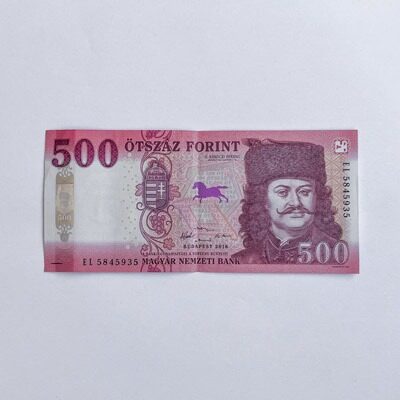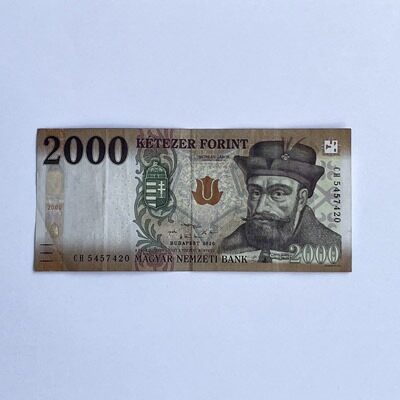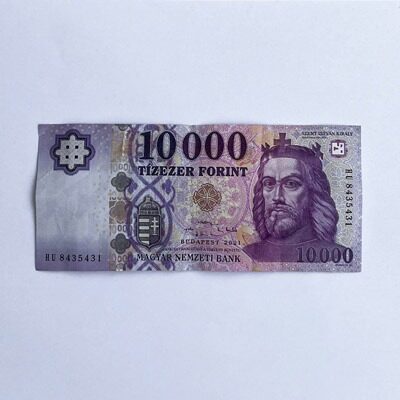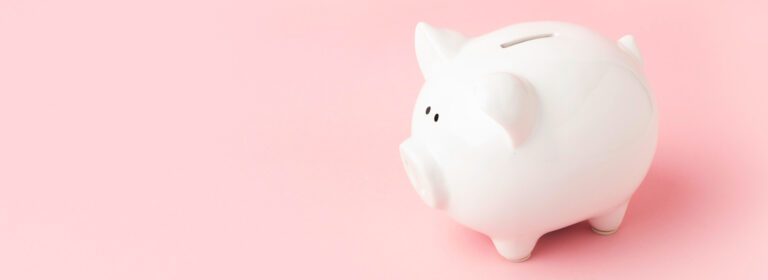Whether you’re strolling along the enchanting streets of Budapest, exploring the historic castles of Eger, or savoring the flavors of traditional Hungarian cuisine, understanding the forints and its various denominations is crucial for everyday transactions.
It is also interesting that each coin and banknote tells a story of history, heritage, and the enduring spirit of a nation. You can either see iconic landmarks adorning the bills or famous Hungarian luminaries gracing the banknote forints. Either way it’s worth taking a look at the Hungarian currency.
You can read about the banknotes here, if you want to
know more about the coins click here.
Now let's take a look at
the various denominations of banknotes
500 forint
This paper bill features a portrait of Ferenc Rákóczi II, a Hungarian politician and the former President of Hungary, on the obverse side. The back of the banknote features the image of the Sárospatak Castle (Sárospataki vár) located in Sárospatak, Hungary


1000 forint
On this note, you’ll typically find the portrait of King Matthias Corvinus, a Renaissance monarch of Hungary. He was known for his patronage of the arts, military prowess, administrative reforms, and contributions to Hungarian culture during the Renaissance period. The reverse side features a depiction of the Hercules Fountain (Herkules-kút) located in the Castle District of Budapest.
2000 forint
The 2000 forint note usually showcases the portrait of Gábor Bethlen on the obverse side. He was a Transylvanian prince, elected Hungarian king under the name of Gábor I., one of the most important figures in 17th century Hungarian history. On the back you can also see Gábor Bethlen amongst his scientists.


5000 forint
This banknote features the portrait of István Széchenyi, a prominent figure in Hungarian history. Széchenyi was a statesman, reformer, and key figure in the Hungarian Reform Era of the early 19th century. The back of the banknote features a picture of Széchenyi Mansion (Széchenyi-kastély) located in Nagycenk, Hungary.
10 000 forint
The banknote features a portrait of Saint Stephen (István), who was the last Hungarian prince and the first Hungarian king. The back depicts the View of Esztergom, which is a significant historical and cultural site in Hungary. Esztergom is known for its historic architecture, including the Esztergom Basilica, and its picturesque location overlooking the Danube River.


20 000 forint
On this note you can see the portrait of Ferenc Deák, a Hungarian politician, lawyer, judge, statesman, Member of Parliament and Minister of Justice in the Batthyány government. He played a leading role in the reform era and in dualism, and is also known as “the sage of the country” and “the nation’s provost”. Additionally, the back of the banknote depicts the Hungarian Temporary House of Representatives. You can find more informations about the banknotes here.
Hint
Notice and pay attention to the different colors of
paper monies, makes it easier to tell them apart.
Exploring Hungary involves understanding its currency, the forint (HUF), including coins and paper money. For tourists, using the forint is recommended for fair transactions and a richer cultural experience. It’s wise to familiarize yourself with the currency’s appearance, for easy identification. To make this easier, saving this post with pictures of Hungarian forints can be helpful. It allows you to recognize and utilize the currency confidently in various situations throughout your journey in Hungary. Hope you found the mentioned informations useful, if you want to know more about the coins click here.

